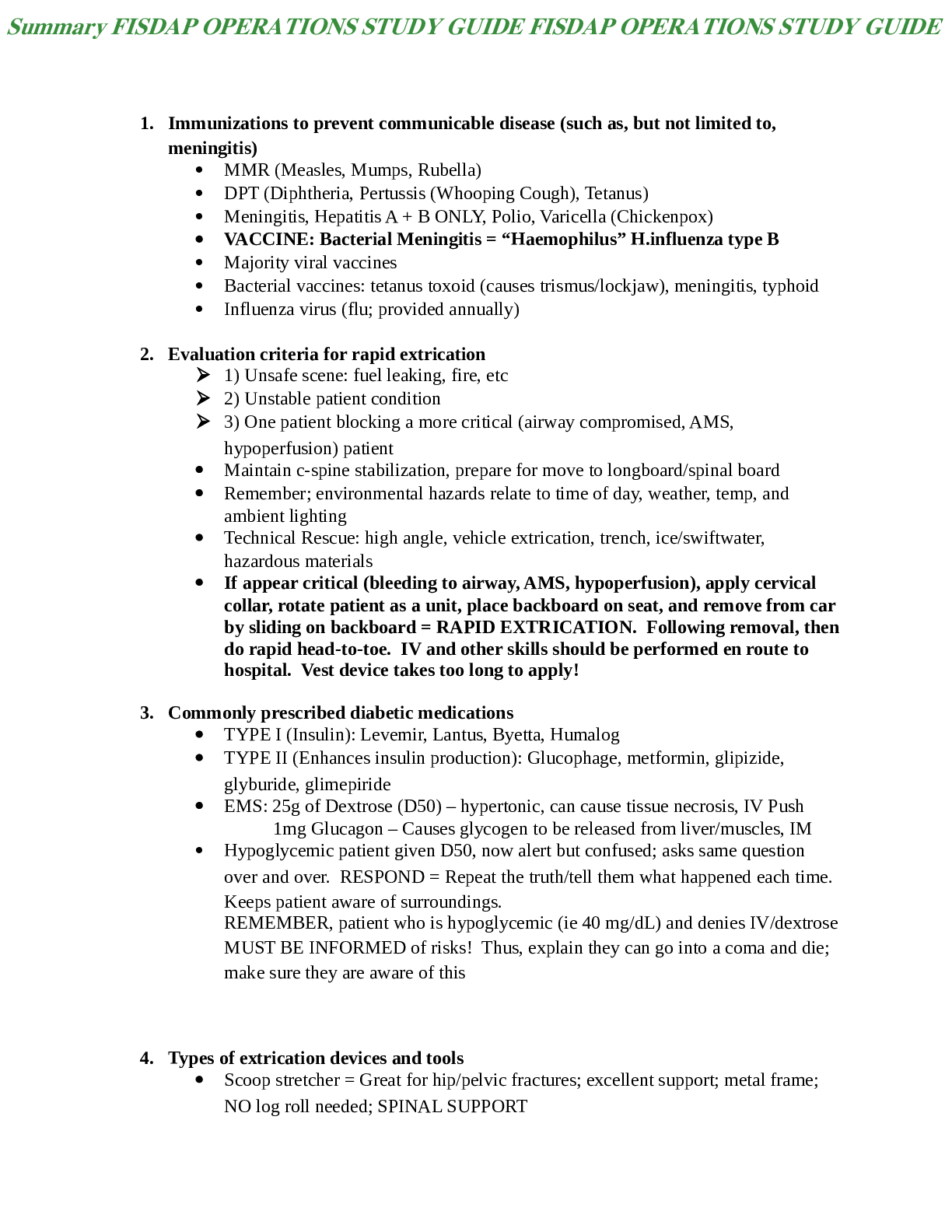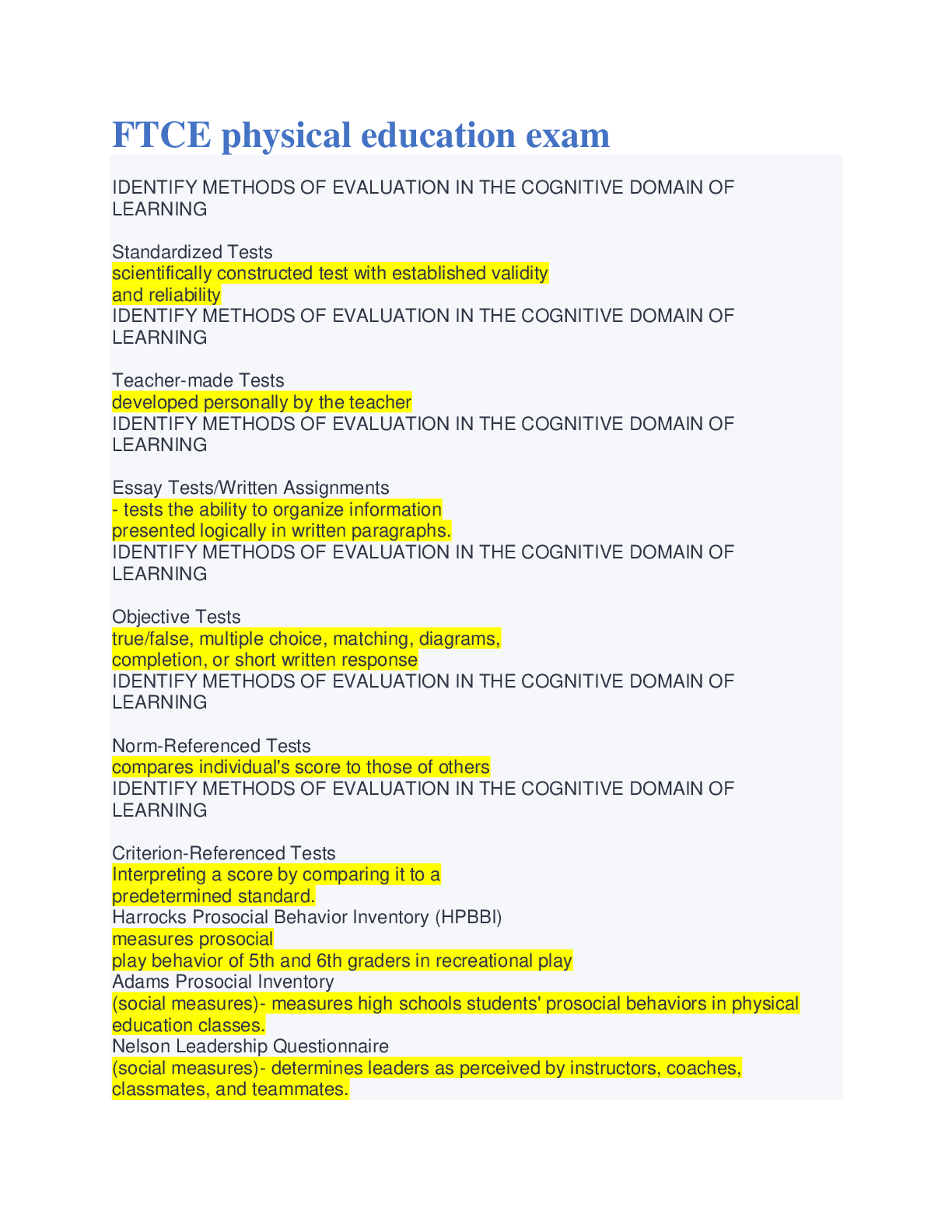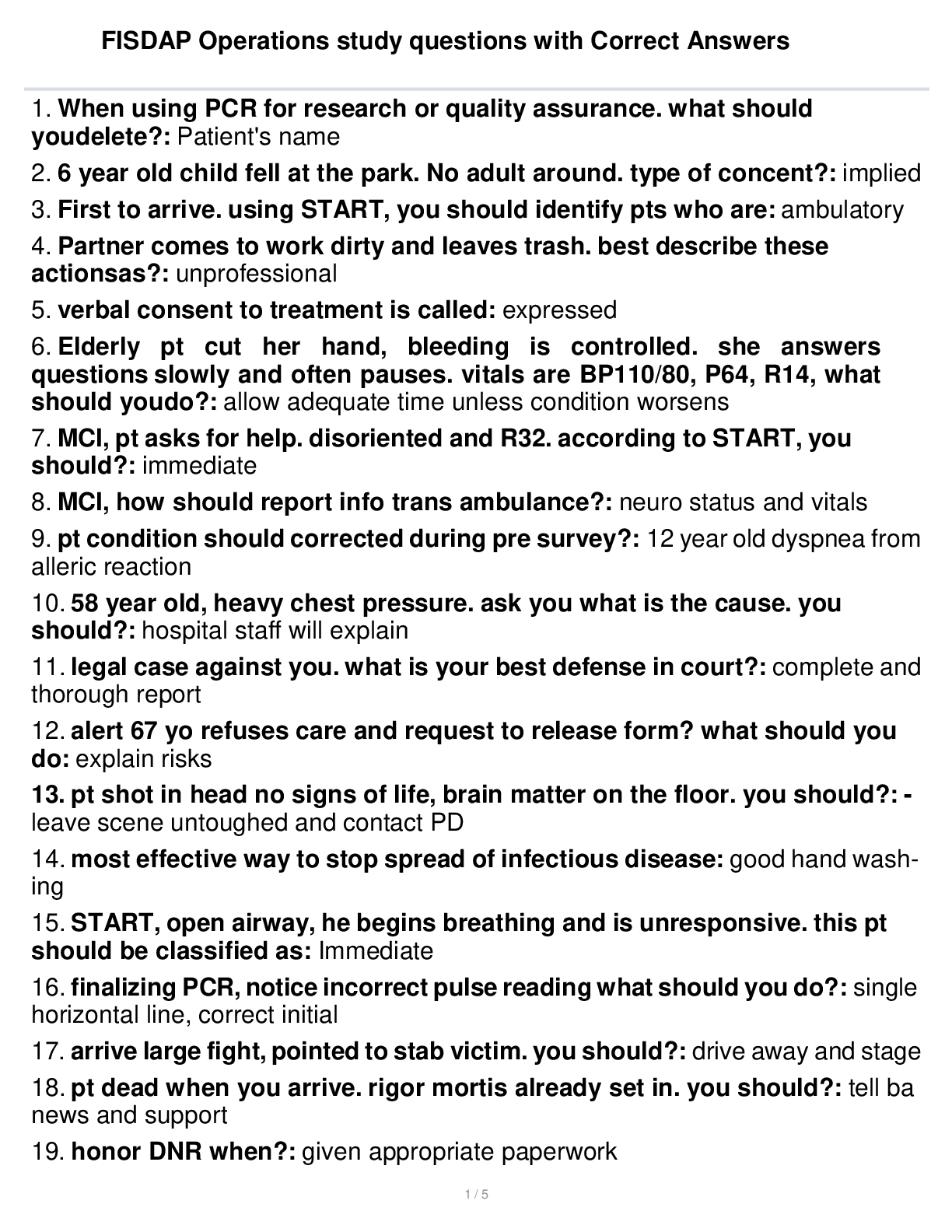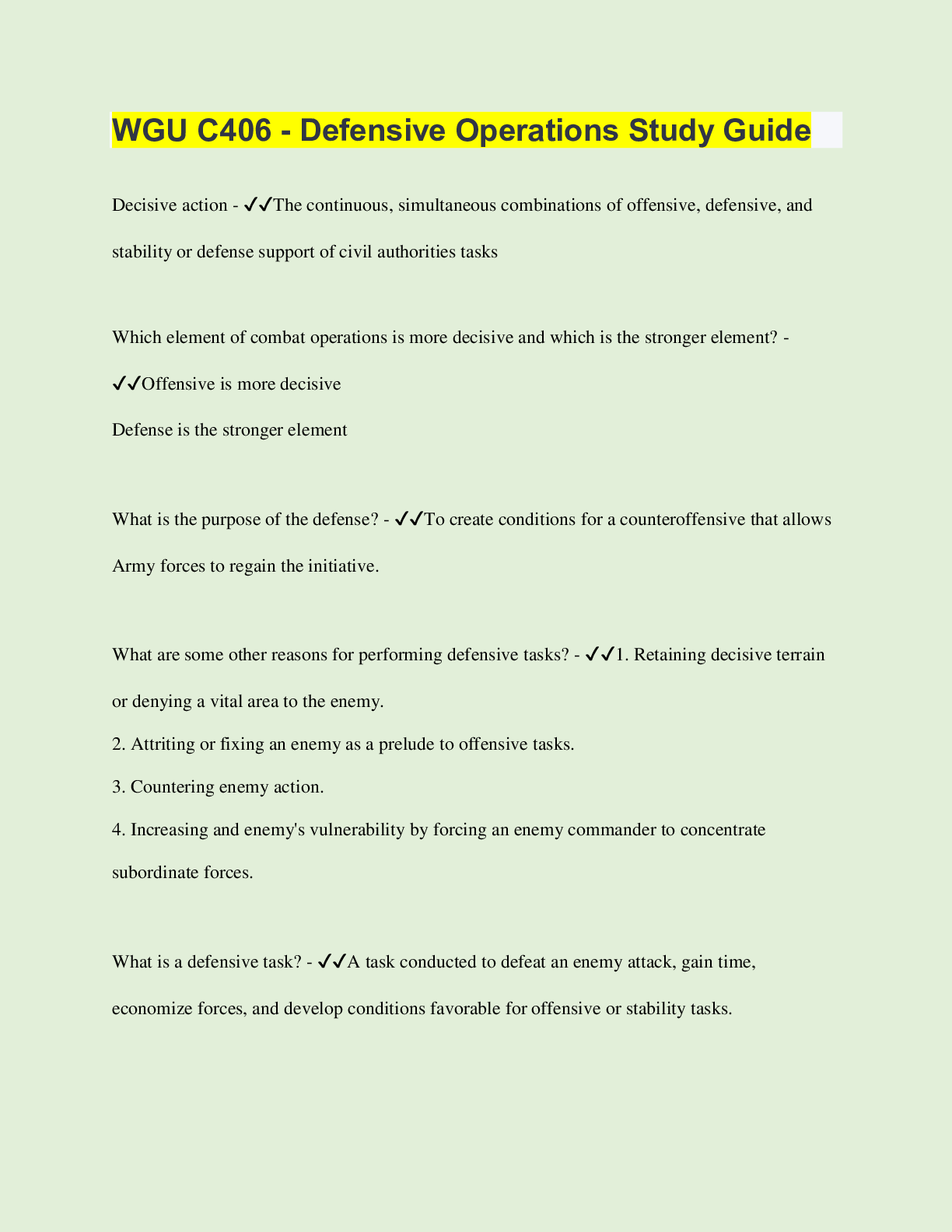Health Care > EXAM > Summary FISDAP OPERATIONS STUDY GUIDE FISDAP OPERATIONS STUDY GUIDE (All)
Summary FISDAP OPERATIONS STUDY GUIDE FISDAP OPERATIONS STUDY GUIDE
Document Content and Description Below
1. Immunizations to prevent communicable disease (such as, but not limited to, meningitis) MMR (Measles, Mumps, Rubella) DPT (Diphtheria, Pertussis (Whooping Cough), Tetanus) M... eningitis, Hepatitis A + B ONLY, Polio, Varicella (Chickenpox) VACCINE: Bacterial Meningitis = “Haemophilus” H.influenza type B Majority viral vaccines Bacterial vaccines: tetanus toxoid (causes trismus/lockjaw), meningitis, typhoid Influenza virus (flu; provided annually) 2. Evaluation criteria for rapid extrication 1) Unsafe scene: fuel leaking, fire, etc 2) Unstable patient condition 3) One patient blocking a more critical (airway compromised, AMS, hypoperfusion) patient Maintain c-spine stabilization, prepare for move to longboard/spinal board Remember; environmental hazards relate to time of day, weather, temp, and ambient lighting Technical Rescue: high angle, vehicle extrication, trench, ice/swiftwater, hazardous materials If appear critical (bleeding to airway, AMS, hypoperfusion), apply cervical collar, rotate patient as a unit, place backboard on seat, and remove from car by sliding on backboard = RAPID EXTRICATION. Following removal, then do rapid head-to-toe. IV and other skills should be performed en route to hospital. Vest device takes too long to apply! 3. Commonly prescribed diabetic medications TYPE I (Insulin): Levemir, Lantus, Byetta, Humalog TYPE II (Enhances insulin production): Glucophage, metformin, glipizide, glyburide, glimepiride EMS: 25g of Dextrose (D50) – hypertonic, can cause tissue necrosis, IV Push 1mg Glucagon – Causes glycogen to be released from liver/muscles, IM Hypoglycemic patient given D50, now alert but confused; asks same question over and over. RESPOND = Repeat the truth/tell them what happened each time. Keeps patient aware of surroundings. REMEMBER, patient who is hypoglycemic (ie 40 mg/dL) and denies IV/dextrose MUST BE INFORMED of risks! Thus, explain they can go into a coma and die; make sure they are aware of this 4. Types of extrication devices and tools Scoop stretcher = Great for hip/pelvic fractures; excellent support; metal frame; NO log roll needed; SPINAL SUPPORT 1 / 2 Stokes basket/litters = Great for moving over rough terrain; use SIX people Folding stretcher = LESS support than scoop; better for 2nd patient to be strapped to bench seat Stair chair = move patient in tight spaces, down stairs safely, good for stroke, nausea, cardiac; NO spine support! Rescue = “figure eight on a bight/bite” = secure loop at the working end of a rope, can attach to a person, fixed object, or piece of equipment. More secure than a standard figure 8. Half hitch NOT secure. Hitch knot only to ROUND object. 5. Methods to developing EMS research Mean = average of the numbers Median = midpoint number Mode = Most frequent number Overall, research validates existing treatments/protocols, provides better patient care, and improves EMS system Case Control – TWO groups; one w/ injury and other w/o or patients with same injury & diff outcomes. Considered observational, neg = lots of variables. Looking for causative factors of condition Prospective – Controlled, randomized, participants followed FORWARD in time, high consistency Cohort = groups of people with common characteristics (age, living conditions, personal habits). Ex: determining assoc. of smoking + lung cancer. Over time, group will divide into those who smoke and those who don’t. Determine similiarities between those groups. Retrospective – Occur AFTER event taken place (review of all chest pain PCRs); however, no control over patient pop, not randomized, gathered data not designed for specific study Randomized – Divided into control/study groups randomly = no bias. Impractical due to nature of EMS. Computer program better to randomize. Single blind study = Patient OR provider do not know if standard therapy or research therapy is being given ***Double blind study = Both patient/provider do not know if standard/research therapy is being given. NO BIAS + PROVIDE BEST EVIDENCE REGARDING EFFECTIVENESS OF TREATMENT*** We collect data regarding illness and injury prevention programs is to obtain funding for the programs, target the appropriate groups with education and other interventions, and then measure the success of our programs. 6. Agencies responsible for certification White paper/1966 – created DOT (Department of Transportation) NHTSA (Natl highway traffic safety admin) part of DOT; made EMS NREMT – national org. that offers uniform testing process; allows reciprocity (3) types of ambulances regulated by Fed Govt = KKK = Dept of Transportation [Show More]
Last updated: 2 years ago
Preview 1 out of 12 pages

Buy this document to get the full access instantly
Instant Download Access after purchase
Buy NowInstant download
We Accept:

Reviews( 0 )
$15.00
Can't find what you want? Try our AI powered Search
Document information
Connected school, study & course
About the document
Uploaded On
Sep 07, 2022
Number of pages
12
Written in
Additional information
This document has been written for:
Uploaded
Sep 07, 2022
Downloads
0
Views
224


















